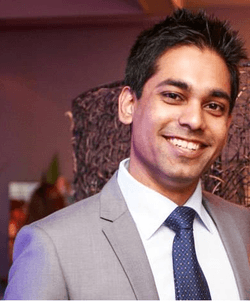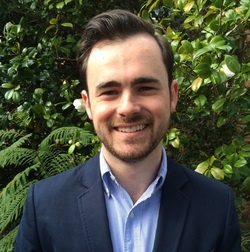
New medical schools – part of the problem or part of the solution? Q&A with NSW Medical Students’ Council Chair Neel Gobin and Public Relations Officer Christopher Lemon
In mid-May, the Commonwealth Government announced its support of Curtin University’s medical school, pledging a contribution of $20 million. The new medical school will commence in 2017 and will be fully operational by 2022, graduating 120 students each year.
My Health Career has had Neel Gobin (NSWMSC Chair) and Christopher Lemon (NSWMSC Public Relations Officer) answer a few questions on how the establishment of Curtin Medical School could impact other states including NSW.
This is what Neel and Christopher had to say….

“The increasing number of medical graduates in Australia has always been a strong advocacy focus of the New South Wales Medical Students’ Council (NSWMSC). New South Wales has the greatest number of medical students of any state. There has been a consistent shortfall in the number of available internship positions for a number of years.
The NSWMSC has emphasised that increasing the number medical students anywhere in Australia could easily increase this shortfall in NSW, with significant consequences for both doctors in training and the broader community.
Is a new medical school in Perth a good idea?
The Prime Minister’s announcement about the government’s commitment to funding Curtin University’s Medical School came as a complete shock.
The NSWMSC, as well as many other medical organisations, including the Australian Medical Association (AMA) and Medical Deans Australia and New Zealand (MDANZ), has made it abundantly clear that increasing medical student numbers without increasing the number of training positions is just going to exacerbate the problem we have at the moment of having too many junior doctors and not enough jobs.
This will not solve the problem of not having enough doctors in the community.
What impact will a new medical school in Perth have on NSW?
In 2015, there will be over 1100 medical students expected to graduate in NSW. The Health Education and Training Institute (HETI) indicates that there will be 983 internship positions available in 2016. That leaves us with a shortfall of approximately 120-144 places, depending on graduating figures. So we’re already in a position of being oversubscribed.
If any of the graduates from Curtin University choose to do their internship in NSW in a few years – and we know that medical students often travel for study and try to return to their home state for work, we’re just further clogging the pipeline for producing our future medical workforce.
Western Australia needs more doctors, but aren’t vocational training positions already oversubscribed state-wide and nation-wide?
There are reports suggesting that Western Australia needs around another 900 to 1000 fully qualified doctors. If this really is the case, the problem lies in the shortage of training positions, not medical students. Graduates from the new medical school will only become fully qualified specialists in 10-12 years from now.
The $20 million going to Curtin University’s Medical School should be going into vocational training to allow those already in the system who are trying to get one of the few jobs available to become fully qualified. If this approach were used, the problem in Western Australia will be on its way to being solved in a timely manner. Increasing the number of medical students will have the complete opposite effect, and draw it out further.
Do you see the possibility of private hospitals increasing their involvement in post-graduate medical training to help medical graduates bypass the training bottleneck in public hospitals?
Private hospitals have made a great contribution to improving the training bottleneck for junior doctors in recent years. As part of the Commonwealth Medical Internship (CMI) initiative (announced in 2013 by the Federal Government) up to 100 additional medical graduates can complete their internship each year in private facilities. This funding is available until 2017.
In 2015, 81 graduates were able to participate in this program on the condition that they complete a 48-week return of service period in a rural, regional or remote location. Most of these students completed their internship in rural locations, such as Wagga Wagga, Townsville, Mt Isa, Bundaberg and Alice Springs. Initiatives like these – utilising resources we already have available to us – as well as incentives to draw graduates to areas of shortage are what we truly need.
Charles Sturt University (CSU) and La Trobe University are now back in the media with the proposed Murray Darling Medical School (MDMS) rural teaching facility. What are your views on this new proposed medical school proposal?
CSU and La Trobe are suggesting if their proposition for a new medical school were supported, 80% of medical students would be from a rural background. They would also be trained in rural locations such as Orange, Bendigo and Wagga Wagga.

Improving the rural medical workforce is an issue of great importance to the NSWMSC and the broader medical community. There are now many initiatives in place to try to address this issue, including the establishment of rurally-based clinical schools associated with existing universities to teach and retain medical students in rural areas. In fact, there are excellent teaching facilities already existing at the three proposed MDMS locations.
The Mason Review of Australian Government Health Workforce Programs has highlighted that additional medical schools, such as the Murray Darling Medical School would actually harm the value of this approach (existing rural training programs) rather than improve it.
Once again, a better way to use the money needed to support the establishment of another medical school, as The Hon Dr Sharman Stone (Federal Member for Murray) has indicated in the House of Representatives in December 2013, would be to improve funding and incentives for rural internships and expanding specialty training places.
How are students reacting to the news regarding the new medical schools?
The NSWMSC has been contacted by students currently submitting their internship applications for 2016, students who will be graduating in a few years’ time who will be affected by cohorts from new medical schools, and even currently practicing junior doctors.
The message has been clear from all – increasing the number of medical students will just make it more difficult to find work (or even train to obtain general registration by the Medical Board) and will not increase the number of doctors for the community.
We hope that the Federal Government will hear these concerns and adjust its approach to improving the medical workforce and the health of the community accordingly.”
New South Wales Medical Students’ Council
The NSW Medical Students’ Council (NSWMSC) represents over 4,500 medical students currently studying in one of the seven medical schools in NSW.
Neel Gobin is the Chair of the NSWMSC and the Immediate Past President of the UWS Medical Society.
Chris Lemon is the Public Relations Officer of the NSWMSC and a second year medical student at the University of Notre Dame, Sydney.
More articles on My Health Career:
- New medical school in Western Australia the “worst decision in decades”
- 1/6 of 2015 commencing medical students won’t be able to become fully qualified doctors
- How to avoid burnout – for med students and doctors
Image (graduation): Charlie Nguyen – flickr
Image (medical school): berknot – flickr

One reply to “New medical schools – part of the problem or part of the solution? Q&A with NSW Medical Students’ Council Chair Neel Gobin and Public Relations Officer Christopher Lemon”
Great article and summary of the situation. Helps put things into perspective and understand the implications of not increasing internship and further training positions